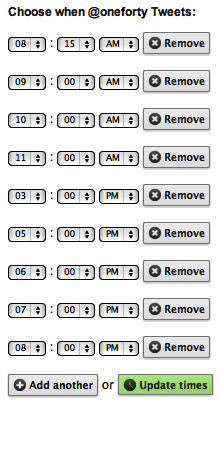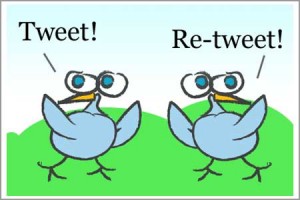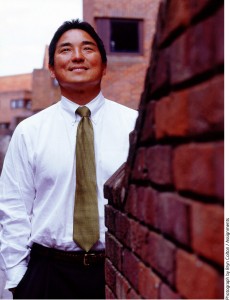By: Hillel Fuld
Twitter, with all its shortcomings, is truly a revolutionary platform. Why do I say that? Not because of the the active role it played in the world’s most recent revolutions. I am also not saying it because of the major world events for which the news first broke on Twitter. I am talking from a personal perspective. The people I have had the chance to meet and even interview, are people I would never ever have had the opportunity to connect with, had it not been for this platform.
Having said that, almost all Twitter users are faced with dilemmas when first joining the service, and as time goes by, the dilemmas only get bigger and more difficult. Of course, there are no rights and wrongs when it comes to how Twitter is used, and everyone has to do what’s best for them and their needs. However, there are some basic no no’s that annoy pretty much everyone across the board and should be avoided. You can read about those here.
While it is pretty much clear to anyone on Twitter that self promotion 100% of the time is something you should avoid, there are many grey areas when it comes to tweeting and I, for one, still have not figured out the best solution to the following dilemmas:
1: Scheduled Tweets: As a blogger, I have written well over 2,000 blog posts on various sites. The problem is that while I share posts after I write them, older posts I have written consistently get lost and are never seen by most of my audience. Now, I am obviously not talking about posts that are news, I am talking about articles that are relevant even months or years down the road. How can a person ensure that these old posts do not disappear into the abyss that is the worldwide Web?
One way is by scheduling tweets. However, if you send out automatic tweets, that means you might not be around to reply to anyone who asks you a question or has a comment about that post. And we all know that Twitter is all about engagement. So to schedule or not to schedule tweets?
2: Thanking for a Retweet: One of the first things you will notice on Twitter is that everyone is really nice, seriously. People are much more willing to help each other out on Twitter than in real life, to the point that I have been asked on numerous occasions, why people are so responsive on Twitter, what is in it for them? This complicates things when someone retweets your tweet. If you do not know what I’m talking about, check out Everything You Need to Know about Twitter and Tweeting.
So when someone retweets you, do you thank them? That would be the nice thing to do, right? Well, what happens if you are a person like Alyssa Milano or Robert Scoble who get thousands of retweets a day, do all your followers need to see “Thank you for the RT” pollute their stream? So, to thank for a retweet or not to thank for a retweet?
3: Old or New Retweet: Now that we know what a retweet is, a little history lesson. Back in the olden days, there was one way to retweet. Copy the person’s tweet and add a “RT @<username>” before the tweet. Then Twitter, the company, added a new way to retweet, dubbed the “new RT” or the “native RT”.
The main difference is that with the new RT, you cannot add your own words to the original tweet and you save the space of the “RT@”. However, your retweet does not show up in the person’s mentions and generally speaking, the chances of that person seeing that you retweeted them are significantly lower. Each has its own advantages and based on my personal experience, most people use the new RT. So, to use the new RT and save space or to use the old one and provide extra “social” value?
4: How much to Share: This is the famous question of how much private information to share on the Web, and it is magnified by Twitter with people following your every word. Now, it is important to remember that different people use Twitter differently, but everyone seems to struggle with the question, how much to share and how much is too much? Rule of thumb, your bathroom practices are too much, and while that might be obvious to you and me, trust me when I tell you, it is not obvious to everyone.
The thing is, companies or individuals that only tweet professional content will not get as much responsiveness from their community as someone who shows their personal side. People like to talk to other people, not to companies. While, there is no real percentage of how many tweets should be professional vs personal, most people would agree that your tweets should include both in one quantity or another. The question is, should my tweets be mostly professional content with a touch of personal or vice versa?
5: Time Zones Vs. Spam: We already discussed old posts getting lost, but what about tweets getting lost? The reality is that you have followers from all parts of the world and what you tweet in the morning your time, might never be seen by someone across the globe who will only wake up hours later. So, the solution is repeating tweets for different time zones. A big believer in this method is the famous Guy Kawasaki.
However, if you do follow Guy Kawasaki, you will notice that you generally see the same tweet at least twice throughout the day, if not more. Some might view this as spamming and polluting their stream. Something I try to do is mix it up a bit and not repeat the same exact tweet. However, this causes another issue that people will click on the link that will bring them to see the same post they read that morning. That can get annoying as well. So, to repeat tweets for different time zones and risk annoying some people or tweet every post once and only once?
6: Tweet or DM: If you use Twitter, you probably know the difference between a public tweet and a DM (direct message), which is private. What most people, myself included, do not know is the etiquette of what belongs in a tweet as opposed to what belongs in a DM. If you wanted to say good morning to some of your Twitter friends for example, tweet or DM? Tweet? Won’t that annoy people when they see twenty “Good mornings” in their stream? DM? The recipient might think “Why the need to send this privately?”
Again, there are no rules, but there are some things that clearly belong in a DM, such as private information (email might be a better option), and some things that I think clearly belong in a tweet, like a comment about a post the person wrote and you liked. (Why not let others hear your feedback, assuming it is not negative?) Most tweets do not fall into this black and white category and leave most people wondering, to send by public tweet or by DM?
7: What deserves a response: When I was just getting started on Twitter, many people helped me out. One person, however, deserves a special mention, Ahuvah (follow her here)! On numerous occasions, I would ask a question and get an immediate response from her with two simple words “Google it”. Not everything needs to be asked on Twitter. It is true that I, and many others turn to my followers with questions about almost all topics (including this post), but some things should be left off of Twitter.
Now, I have said many times that while follower count is practically meaningless and irrelevant, one number I am very proud of is that 81% of all my tweets are replies. I almost always respond to people who reach out to me. However, not everything deserves a response. For starters, people that tweet offensive content should not be engaged, I learned this the hard way (ask me about that if you want to hear the story, I am @hilzfuld on Twitter). In addition, it kinda annoys me when someone tweets me to ask what a DM is. I mean, really, just Google it. Maybe I am not as nice as Ahuvah, but not every question I am asked gets a response. The big question is what does and what does not deserve your response?
8: Connect on other platforms: This is always a tricky one. Twitter is Twitter and Facebook is Facebook. Different audiences, different usage patterns, and different connections. When a Twitter friend adds me on Facebook, I always contemplate whether to accept. Now, obviously, if this is a person you have been communicating with for years on Twitter and lives ten minutes from you, the chances of you interacting in real life are high, so Facebook is not such a bad idea.
However, if someone liked a post I wrote and decided to add me on Facebook, I don’t know about you, but I will immediately hit the Ignore button (unless of course the person includes a personal message explaining why they added me.). LinkedIn, in my opinion, is very different and if I have connected with someone on Twitter who works in my industry, then I am generally more open to adding them on Linkedin then on Facebook. When do you add a Twitter friend to connect on other platforms?
9: To Follow or not to Follow: So how do you decide who to follow on Twitter? Well for starters, you can read The First 99 People to Follow on Twitter. After that, everyone has their own criteria. Some automatically follow back anyone that follows them, to me, that kinda defeats the purpose of Twitter and connecting with interesting people. Others look at the follower/following ratio. A person’s avatar might play a role in this important decision as well.
If you ask me, the first thing I look at when deciding whether to follow someone is if they have any replies to people among their last ten tweets. If all ten tweets are just blasting content or promotional material and no engagement, the person could have a million followers, the nicest avatar on Twitter and could even be a celebrity, I am not following that person. How do you decide whether to follow or not to follow someone on Twitter?
10: To Sell or not to Sell: We have all heard about major companies such as Dell, Old Spice, Zagg, and many others using Twitter to boost sales. It works. So, should you do the same? Well, that depends. Just like anything else in life, there is a way to do things. Nothing is more annoying than being spammed on Twitter when all you want to do is hang out and chat with your friends.
So, if you are going to use Twitter as a sales tool, how should you go about achieving results without annoying people? Maybe Twitter is not the right platform for the type of business you are running, and traditional marketing and sales are more up your alley? There are of course differing opinions on this matter and both sides have some basis to their points of view. The big question is, how does one balance the need for ROI in sales and the worst mistake a brand can possibly make on the Web, spamming? So, when it comes to Twitter, to sell or not to sell?
You probably noticed that I do not have answers to the above questions and I am hoping you will share your insight on these matters. Hit me up in the comments below or reach out to me on Twitter, I am @hilzfuld.







Hi Hillel,
Yu wrote so well! Thank you so much for the detailed descriptions of dilemma that all Twitterian like myself also encountered and it goes to show that you are really an expert in it.
After 2 years using @prawfeed, I am still scratching myself if I am doing it right?
Occasionally appending howto, jokes, riddles, sales pitching and trying to conjure some topics and still I am feeling lonely 😉
Except for a few good twitterian e.g. @HOMELESSCRISIS and @Poet_Carl_Watts majority of them will not even reply any single question I asked.
Nevertheless, this article is so well written that it should be use for beginner who are new to Twitter to read it as a Start Up Manual.
I will be back for more! Cheers!
William Siong
My Videos Talk Business
Hi Hillel,
You’ve written a very comprehensive list that covers most of the conundrums we all face on Twitter. There are quite a few decisions to make when creating a personal strategy. When I started on Twitter in February, I found it all so confusing. But now, I’ve adopted my “standard operating procedures” to deal with these 10 dilemmas.
I did want to point out that sometimes when people tweet out a question, they’re not really looking for an answer, but an opinion–a trusted opinion. Let’s say I want to buy a new Skype headset. I can Google it and find lots of helpful information, but on Twitter, I can get direct advice that will help me make a decision. If I see someone ask a question like that on Twitter, I just assume that they’ve already Googled it.
Very helpful post!
-Marianne
Glad that I found this site. I really can not find solution in how will my old posts will still become active. Thank you for sharing this information.
A good answer is to do what your mentors do. Haven’t found Twitter mentors yet? Get on it! Get more than two 🙂
And questions like these are a helpful guide as to what kind of mentors to get. You should always engage and learn from at least one person that you feel you can emulate on Twitter.
Thanks Dave! Mentor? That’s what I have YOU for!! Thanks for reading and commetimg, it’s an honor!
A great original concept for a Twitter post, Hillel. Really nice work.
Thanks a lot, means so much coming from you, the number one Twitter authority on the Web.
Excellent post. Well worth reading.
I am constantly worried about ReTweeting as well as I like to add some of my own comments and share on my FB page so that my friends can see it. To do this I have to use the Old RT method which means that everything I RT comes up on the original person’s feed.
I teach a 6 hr Social Media class about once a week. It is always hard for the class to grasp the concept that Twitter brings a lot of questions. Most feel, OK show me how to do this and I am on my way. But it doesn’t work that way. There is many questions that need to be answered before you get our there.
I have 3 classes next week so I am just going to bring your post up and have them read it! It should save at least an hour of explaining!
Hillel,
Fantastic to read this post, I really love it. I think these are exactly the points up for discussion and especially the thanking for RTs or not is something I am pondering a lot recently.
Oh and thanks for putting the Buffer picture in there, much appreciated.
So what can I say, Buffered this great post for sure! 🙂
Hillel,
Great post. The time zone thing is definitely an issue for me. I’ll definitely be sharing your work.
thanks!
this article is so well written that it should be use for beginner who are new to Twitter to read it as a Start Up Manual.
I really can not find solution in how will my old posts will still become active. Thank you for sharing this information.
cool site